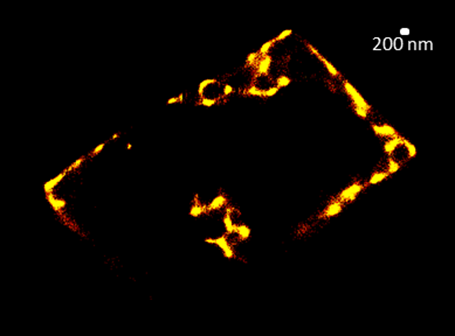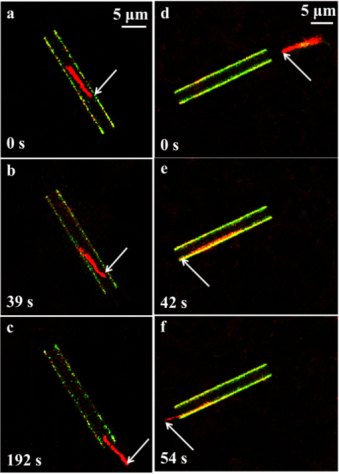 Highlight
Highlight
1. Super-Resolution Fluorescence Microscopy
The nanoscale resolution of super-resolution microscopy is especially suitable for nondestructively detecting dynamic process in nanostructures. Among super-resolution microscopy techniques, (direct) stochastic optical reconstruction microscopy ((d)STORM), which is based on detection and localization of the signal of a single fluorescent molecule, can achieve 20–30 nm lateral resolution. This technique has been widely used, for example, in detecting the spatial distribution of organic and inorganic phases, in distinguishing the nanoscale structures in cell compartments like the nucleus and cell organelles, or acquiring the distributions of proteins on cell membranes. Angew. Chem. Int. Ed., 55(2016), 908-911; Sci. Rep., 5(2015), 16559; Sci. Rep., 5(2015), 11073.
Direct Observation of the Distribution of Gelatin in CaCO3 Crystals
Detailed structures of tubular compartments in NIH3T3 cells
2. Motor Protein Reconstitution
2.1 Rotary Motor (CFoF1-ATPase) Assembled into Microcapsules/spheres for ATP Biosynthesis
Biomolecular motor, ATPase assembled in lipid-modified polyelectrolyte microcapsules is able to perform the process of ATP biosynthesis and provides a novel routine to fabricate bionanodevices. This assembled complex can not only help us to understand the biological function of ATPase molecules but also such an artificial designed system containing ATPase provides a well-defined container for the storage of energy currency, ATP. When vital activities need energy, ATP will be released across the wall of the capsules as power supply. Angew. Chem. Int. Ed., 46(2007), 6996-7000 (frontispiece); Adv. Mater., 20(2008), 2933-2937; Adv. Mater.,20(2008), 601-605; J. Phys. Chem. B., 113(2009), 395-399;Chem. Soc. Rev., 38(2009), 2292-2303; ACS Nano, 10(2016),556−561.
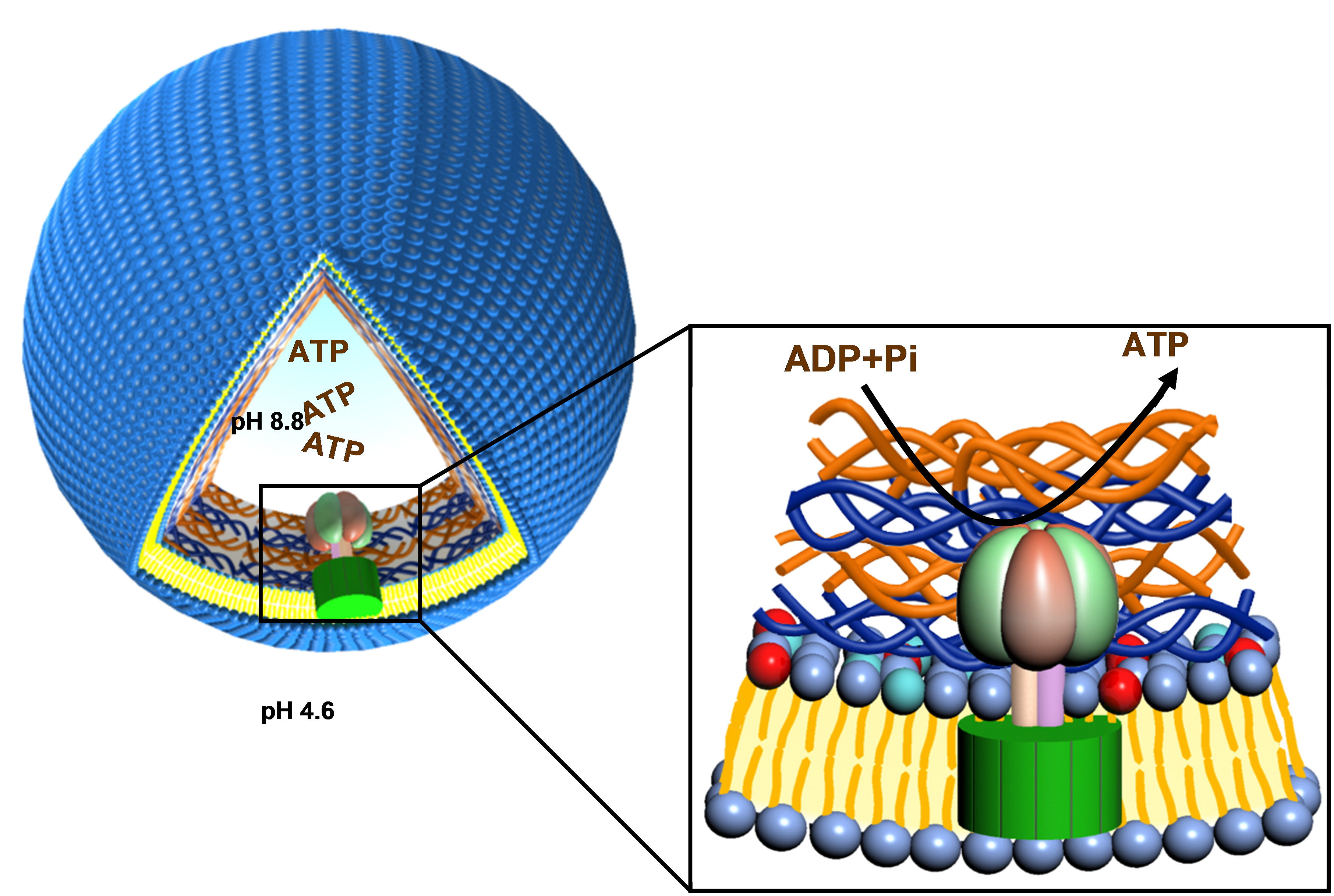
CFoF1-ATPase in Lipid-coated Capsules
Glucose-Driven ATP Synthesis
Light-Driven ATP Synthesis
2.2 Linear Motor (Kinesin) Co-assembled with Microcapsules/spheres for Cargo Delivery
Modification of capsules with specific motor proteins enables to move along microtubules. It is particular interesting to take use of capsules as “cargo” to delivery drugs, biological molecules or catalysis in the living systems. This not only simulates the transport of vesicles, but also be useful for studying the process of drug release and designing novel bionanodevices. Biocompatible micro- and nanocapsules/tubes can be constructed by using layer-by-layer assembly technique and the template method. Through assembling specific recognition units on the surfaces of various capsules, the movement of the capsules along microtubules will be observed directly by fluorescence microscopy. Biochem. Bioph. Res. Co., 379(2009), 175-178; Biomaterials, 31(2010), 1287-1292; Nano Lett., 14(2014), 6160-6164;Nanoscale, 7(2015), 82-85; Chem. Commun., 51(2015), 13044-13046.
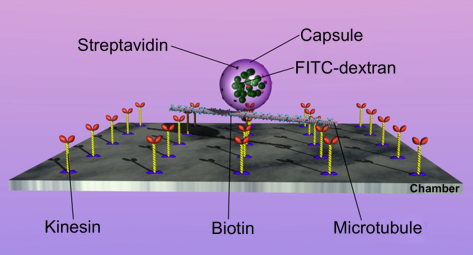
Movement of Polymer Microcarriers Using a Biomolecular Motor Kinesin
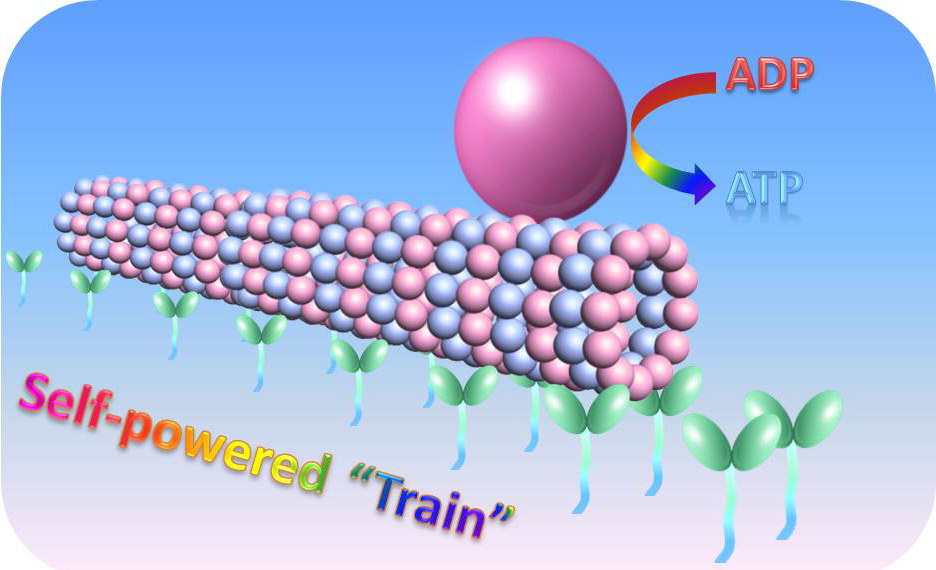
Self-powered Kinesin-Microtubule System for Smart Cargo Delivery

Kinesin-modified LbL Assembled Tubes as Channels to Guide the Motion of Microtubules
